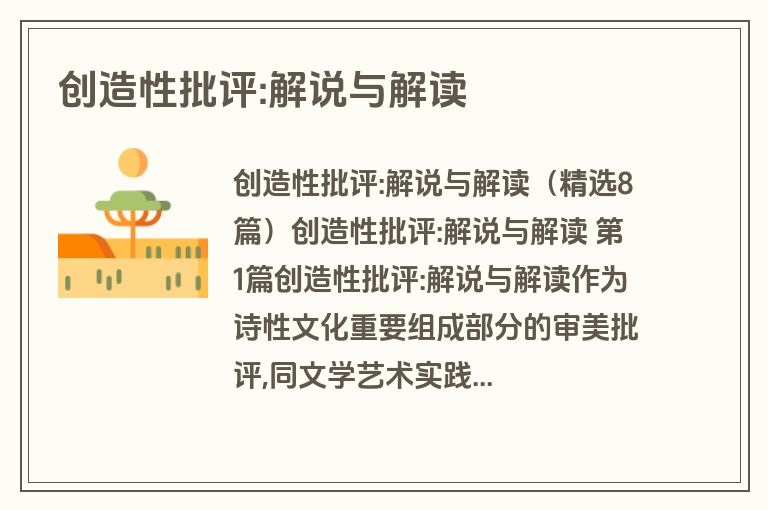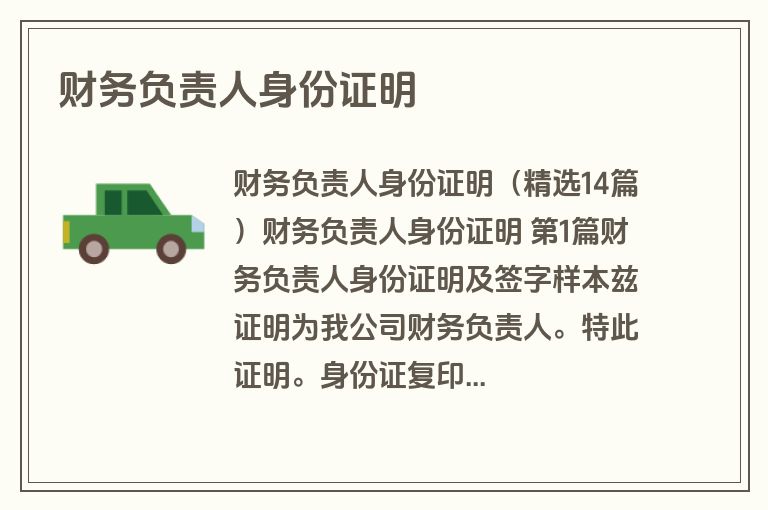湘少版五年级下册英语测试题(精选8篇)
湘少版五年级下册英语测试题 第1篇
湘少版五年级上册英语复习教案
Unit 1-6
[ Teaching aims: ] a.语言知识目标:复习目标语句:What does he/she look like? He/She is....Can I help you? I’d like...., please.Do you want some...? Yes, please./ No, thank you.Can I use your...? Yes, here you are.Can I have....? Yes, you can./ No, you can’t.Which one do you want, the...one or the...one? b.语言技能目标:通过复习与操练,提高学生综合运用语言能力,进行小组表演情境对话。
c.情感态度目标:培养学生团队协作能力,激发学生学习英语的兴趣,积极参与各项活动,在活动中享受小组合作的乐趣与自信。
[ Key points: ]
What does he/she look like? He/She is....Can I help you? I’d like...., please.Do you want some...? Yes, please./ No, thank you.Can I use your...? Yes, here you are.Can I have....? Yes, you can./ No, you can’t.Which one do you want, the...one or the...one? 并能在实际情景中灵活运用。
[ Difficult points: ] Which one do you want, the...one or the...one? 句型的操作和训练。
[Teaching Methods:]
The Audio-lingual Method , TPR, The Direct Method
[ Teaching procedure: ]
Ⅰ.Warm-up(热身活动)
Sing a song.“What would you like?” Ⅱ.Words Review
A.Read the words of Unit1-Unit6, read after the teacher.B.Make dialogues of this words.Ⅲ.Sentences Review
A.Read the sentences and how to use the sentences.B.两人小组读课文。创设情景,鼓励学生在表演的过程中加上动作和表情。这一环节是一个机械操练的阶段,目的让学生更好、更准确的学习语言,掌握语 言。通过学生对课文的感知―理解,小梯度,多台阶地强化了学生对语言知识的 理解与掌握。
Ⅳ.Production(任务完成)
A.分组合作学习:进一步学习如何谈论购物、借物及能做的事情询问及回答并且进行操练。
B.让学生用 “I’d like...., please.” 造句。把学生分成小组,每次每组派一名学生参赛,说得又快又正确的学生得分。有新意的可获得加分。如:回答问题的学生用的都是陈述句,第一个用疑问句的学生可获得加分。得分高的小组获胜。通过完成任务,增强了学生间的了解,促进了学生之间的交流。同时,学生学会了并运用了本课的语言知识。Ⅴ.Summary and Home work(小结与作业)
a.Summary b.Homework
全班完成:熟读课文;听说读写三个重点句子;预习unit7-12: 背诵或表演课文。
Bb Design:
Unit 1-6
What does he/she look like? He/She is....Can I help you? I’d like...., please.Do you want some...? Yes, please./ No, thank you.Can I use your...? Yes, here you are.Can I have....? Yes, you can./ No, you can’t.Which one do you want, the...one or the...one?
湘少版五年级上册英语复习教案
Unit 7-1
2[ Teaching aims: ]
a.语言知识目标:复习目标语句:What time do you...? I...at...Her mother/father....She helps her/ him.What’s your hobby? My hobby is....The sign means “do not...” I’m....I feel....We’re....The Spring Festival is an important festival in China.What do people do ? b.语言技能目标:通过复习与操练,运用句型谈论习惯、爱好、标志、情绪及春节的话题。
c.情感态度目标:培养学生团结协作的精神,提高学生学习兴趣,注重过程性评价,让学生在学习过程中充分得到激励。
[ Key points: ]
What time do you...? I...at...Her mother/father....She helps her/ him.What’s your hobby? My hobby is....在实际情景中运用所学句型进行交流。
[ Difficult points: ] The sign means “do not...” I’m....I feel....We’re....The Spring Festival is an important festival in China.What do people do ?句型的操作和训练。
[Teaching Methods:]
The Audio-lingual Method,TPR,The Direct Method
[ Teaching procedure: ]
Ⅰ.Warm-up(热身活动)
Play a game: Guessing.Ⅱ.Words Review
A.Read the words of Unit7-Unit12, read after the teacher.B.Make dialogues of this words.Ⅲ.Sentences Review
A.Read the sentences and how to use the sentences.B.两人小组读课文。创设情景,鼓励学生在表演的过程中加上动作和表情。这一环节是一个机械操练的阶段,目的让学生更好、更准确的学习语言,掌握语言。通过学生对课文的感知―理解,小梯度,多台阶地强化了学生对语言知识的理解与掌握。Ⅳ.Production(任务完成)
分组合作学习:通过小组合作学习,进一步学习如何谈论习惯、爱好、标志、情绪及春节的话题。并且进行话题的操练。通过完成任务,增强了学生间的 了解,促进了学生之间的交流。同时,学生学会了并运用了本课的语言知识。Ⅴ.Summary and Home work(小结与作业)
A.Summary B.Homework
全班完成:熟读课文;听说读写三个重点句子; 背诵或表演课文。
Bb Design:
Unit 7-12
What time do you...? I...at...Her mother/father....She helps her/ him.What’s your hobby? My hobby is....The sign means “do not...”
I’m....I feel....We’re....The Spring Festival is an important festival in China.What do people do ?
湘少版五年级下册英语复习教案
[ Teaching aims: ]
A.知识目标:复习目标语句:What are we going to do today? We’re going to.....First,...And the,...Next,....Lastly,....Don’t...When’s your birthday? It’s...What will you do for your mother? I’ll...B.语言技能目标:通过复习与操练,能够通过这些语句的练习发展学生综合语言运用能力。
C.情感态度目标:培养学生学习英语的兴趣,积极参与各项活动。
Unit 1-6
[ Key points: ]
将来时will +do.../ be going to do...描述将要做某事,[ Difficult points: ] 否定祈使句Don’t do...及生日月份表达的巩固与操练。
[Teaching Methods:]
The Audio-lingual Method,TPR,The Direct Method
[ Teaching procedure: ]
Ⅰ.Warm-up(热身活动)
Let’s play a game.Quick response Ⅱ.Words Review
A.Read the words of Unit1-Unit6, read after the teacher.B.Make dialogues of this words.Ⅲ.Sentences Review
A.Read the sentences and how to use the sentences.B.两人小组读课文。创设情景,鼓励学生在表演的过程中加上动作和表情。这一环节是一个机械操练的阶段,目的让学生更好、更准确的学习语言,掌握语言。通过学生对课文的感知―理解,小梯度,多台阶地强化了学生对语言知识的理解与掌握。Ⅳ.Production(任务完成)
C.作学习:短文练习。First,....And then,....Next,....Lastly,....运用所复习的句 型,对手工制作进行描述,并说出自己喜欢的季节和原因。D.让学生Make library rules分组讨论,看哪组说得又多又好。有新意的可获得加分。通过完成任务,增强了学生间的了解,促进了学生之间的交流。同时,学生学会了并运用了本课的语言知识。Ⅴ.Summary and Home work(小结与作业)
aSummary b.Homework
全班完成:熟读课文;听说读写三个重点句子;预习unit7-12: 背诵或表演课文。
Bb Design:
Unit 1-6
What are we going to do today? We’re going to.....First,...And the,...Next,....Lastly,....Don’t...When’s your birthday? It’s...What will you do for your mother? I’ll...湘少版五年级下册英语复习教案
[ Teaching aims: ]
a.语言知识目标:复习目标语句:Is there a...?Yes, there is./No, there isn’t.Excuse me, can you show me the way to the...? You can...一般过去式与动词的过去式。Where were you? I was...Was it...? Yes, it was./ No, it wasn’t.What did...do? Did he/she/you...? Yes, he/she/I did.No, he/she/I didn’t.Where did you go? I....Unit 7-1
2b.语言技能目标:通过复习与操练,运用句型介绍自己来自的国家和询问他人,能准确的说出一周的七天,和进行价格的询问和咨询。c.情感态度目标:培养学生学习英语的兴趣
[ Key points: ]
Is there a...?Yes, there is./No, there isn’t.Excuse me, can you show me the way to the...? You can....在实际情景中运用所学句型进行交流。
[ Difficult points: ] 一般过去式与动词的过去式句型的操练与巩固。
[Teaching Methods:]
The Audio-lingual Method,The Direct Method
[ Teaching procedure: ]
Ⅰ.Warm-up(热身活动)
Let’s say a chant together.Ⅱ.Words Review
A.Read the words of Unit7-Unit12, read after the teacher.B.Make dialogues of this words.Ⅲ.Sentences Review
A.Read the sentences and how to use the sentences.B.两人小组读课文。创设情景,鼓励学生在表演的过程中加上动作和表情。这
一环节是一个机械操练的阶段,目的让学生更好、更准确的学习语言,掌握语
言。通过学生对课文的感知―理解,小梯度,多台阶地强化了学生对语言知识
的理解与掌握。Ⅳ.Production(任务完成)
C.合作学习:进一步学习谈论过去发生的事情,祈使句型、There be 句型。并通过合作学习,,增强了学生间的团队协作能力,促进了学生之间的交流。同时,学生学会了并运用了本课的语言知识。Ⅴ.Summary and Home work(小结与作业)
A.Summary B.Homework
全班完成:熟读课文;听说读写三个重点句子; 背诵或表演课文。完成“一起作业”模拟试题
Bb Design:
Unit 7-12
Is there a...?Yes, there is./No, there isn’t.Excuse me, can you show me the way to the...?
You can...Where were you? I was...Was it...? Yes, it was./ No, it wasn’t.What did...do?
Did he/she/you...?
Yes, he/she/I did.No, he/she/I didn’t.Where did you go? I....
湘少版五年级下册英语测试题 第2篇
the first period
一、teaching aims:
1.to help the students to understand these new words: yesterday/ today/ weekdays/ sick/ railway/ station;
2.to help the students to understand the part a;
3.to help the students to use the new sentences: “where were you?” “i was ”, and help the students how to response it.
二、difficult points and key points:
difficult points:
to help the students understand these new words and sentences.
key points:
lets the students act part a out.
三、teaching aids:
1.a tape recorder.
2.some pictures.
3.some word cards.
四、teaching steps:
step 1 warming up.
the teacher and the students make a greeting with each other.
t:“good morning, boys and girls.”
s:“good morning, teacher.”
t:“how are you?”
s:“i’m fine. thank you. and you?”
t:“i’m fine, too.”
and then sing the english song: days of the week.
step 2 presentation and drill.
1.t: what day is it today? / how many days are there in a week? what are they?
s:..
t:the day from monday to friday is weekdays. saturday and sunday are weekdays. today isand yesterday was
the teacher uses the calendar to show the new words for the students, and write these new words down.
2.put some pictures under the weekdays words.
t: today is and i’m at school. yesterday was and i’m at the library / sick and in the hospital / where were you?
s:
encourage the students to answer this question.
3.listen to the tape recorder and understand the part a to answer these questions:
where was mingming on saturday?
4.the teacher use the body language to teach these new words: during / hand in / in bed / visit / meet / finish
5.let the students to listen to the tape recorder and read after the tape recorder.
step 3 practices
game: chain game.
divide the whole class into four groups. and give each group some place cards.
s1: today isyesterday was and i was where were you yesterday?
s2:(answer it according the cards.)
step 4 consolidations
act the part a.
step 5 homework
unit 4 where were you, mingming?
the second period
一、teaching aims:
1.make the students to understand the part d and answer the questions after the text.
2.make the students to make up the part d according the key words and some pictures.
3.let the students feel the feeling of love their homeland.
4.let the students to know some past word.
二、difficult points and key points:
difficult points:
ask the students to repeat the part d is so difficulty.
key points:
to help the students to understand the part d and can answer the questions after the text.
三、teaching aids:
1.a tape recorder.
2.some pictures.
3.word cards.
四、teaching steps:
step 1 warming up.
1.the teacher and the students make a greeting with each other.
t:“good afternoon, boys and girls.”
s:“good afternoon, teacher.”
t:“how are you?”
s:“i’m fine. thank you. and you?”
t:“i’m fine, too.”
2. let the students sing the english song: row your boat.
3. let the students to show their homework to the whole class. and give best one a sticker.
step 2 presentation and drill.
1.t: hello, boys and girls. i like traveling very much. i’ve been to many places, shanghai, beijing, and guangzhou there are many beautiful sights in these places. i took many pictures. then divide the pictures to the students, and write some words on the blackboard to teach the students the new words.
2.let the students to read the part d and answer the question after the text:
where was tim last week?
3.to teach the new words about the text: cousin / valley / lake / cave / crystal cave and so on.
4.then let the students to listen to the tape recorder and read after the tape recorder.
step 3 practices
1.ask the students to make a talk freely.
2.filling the blanks.
weekdaystuesdaywednesdaythursdayfridaysaturdaymonday
places
step 4 consolidations
according the blanks and some key words let the students to repeat the part d. and give the best student a sticker.
step 5 homework
unit 4 where were you, mingming?
the third period
一、teaching aims:
1.let the students can uses these sentences make a communication with each other.
2.to sing the english song: there are ten bottles on the table.
二、difficult points and key points:
difficult points:
it’s too difficult that to use the sentence have a talk freely
key points:
make the students to remember the sentence by their hearts.
三、teaching aids:
1.a tape recorder.
2.some pictures.
3.word cards.
四、teaching steps:
step 1 warming up.
1.the teacher and the students make a greeting with each other.
t:“good morning, boys and girls.”
s:“good morning, teacher.”
t:“how are you?”
s:“i’m fine. thank you. and you?”
t:“i’m fine, too.”
2. sing an english song: “there are ten green bottles standing on the wall.”
3. listen to the teacher to read the words and write down on the book.
4.show some pictures to the students about the part d and let the students to repeat the text again.
5.let the students to show their homework to the whole class.
step 2 presentation and drill.
1. let the students to listen the tape recorder and then answer the questions:
where was the little lady?
2. listen to the tape recorder again and let the students sing the song after the tape recorder.
step 3 practices
1.sing an english song change the words little lady, at home, sir into dear sir, at school, girl.
2.let the boys sing this song, then let the girls sing this song. give the best a sticker.
step 4 consolidations
play a game: travel in the dream.
the teacher let the students to listen some soft music. and give the students some place pictures, ask the students to sleep and make a dream. the students should use the pictures to make a communication with each other to describe their dream.
湘少版五年级下册英语测试题 第3篇
教案与教学反思
五年级下册英语教案及反思
Unit10wheredidyougo?
Period1
Step1.warmingup---magiceyes
T:what’sthenameoftheplace?
S:It’sthewindowoftheworld.T:Andwhat’sthenameoftheplace?
Step2.Presentationanddrill
.T:IhadatripyesterdayandIenjoyeditverymuch.wheredidIgo?
S:DidyougototheyueyangTower?
T:No,Ididn’t.S:DidyougotoZhangjiajieNationalForestPark?
T:No,Ididn’t.IwenttotheyueluAcademy,thechangshaUnderwaterworldandmanyotherplacesinchangsha.IwassothirstythatIdranktoomuchandIwentotothetoilet6timesinanhour.Now,lookatthetallbuilding.what’sthenameofthebuilding?
It’sanaquarium.Isawmanydifferentkindsoffishesintheaquarium.2.Listentothetape
Step3.Practice
.T:Boysandgirls,Ihaveagoodpieceofnewstotellyou.Linglingcamehome.wheredidshegoandhowdidshefeel?
Pleaselistentothetapeandanswerthequestions.wheredidLinglinggo?
wheredidshehavelunch?
whatdidshesee?
wheredidDongdongandmumgo?
whathappenedtoDongdong?
2.Listentothetape
3.Discuss
4.Practiceingroups
5.Actout
Step4.consolidation
.S1:wheredidyoudoyesterday?
S2:Iwenttochangsha.S1:Didyougototheaquarium?
S2:yes,Idid.S1:whatdidyouseethere?
S2:Isawmanybeautifulfish.S1:wheredidyouhaveyourlunch?
S2:Inanmcdonald’sRestaurant.S1:wonderful!
2.Assessment
3.Exercises
4.Homework
Period2
Step1.warmingup
.Greeting
2.Singasong----Alittleworld
3.Freetalk
Step2.Presentationanddrill----chaingame
S1:wheredidyougoyesterday?
S2:Iwenttothecinema.wheredidyouhaveyoursupper?
S3:Ihadmysupperathome.whatdidyoudoyesterdayafternoon?
Step3.Practice
.T:wheredidyougo?
S:IwenttothechangshaUnderwaterworld.2.Game
3.Actout
Step4.consolidation
.S1:wheredidyougo?
S2:Guess,please.S3:DidyougotoZhangjiajie?
S2:yes,Idid.S4:DidyougototheSuoxicaves?
2.makebackground
Tim:Hello,Tom.Tom:Hello,Tim.Tim:whatasurprisetomeetyouhere.Howareyougoing?
Tom:Verywell,thankyou.wheredidyougo?
Tim:IwenttotheHunanProvincialmuseum.Therewasanartexhibition.Itwaswonderful.Howaboutyou?
Tom:IwenttoZhangjiajie.That’sabeautifulplace.3.Assessment
4.Exercises
Period3
Step1.warmingup
.Greeting
2.Beginwith“Lastyear…”
Step2.Presentationanddrill
.T:what’sthenameoftheplace?
S:It’satoyshop.T:Andthis?
S:It’sapostoffice.T:wheredidLindagoyesterday?
S:Lindawenttoashop.2.Practiceinpairs
Step3.Practice
T:wheredidyougo?
S:mydiceshows3.Iwenttothemarket.wheredidyougo?
T:mydiceshows4.IwenttotheHunanProvincialmuseum.3.Playthegame
Step4.consolidation
.Sentencepatterns
2.copy“wheredidyougo?Iwentto…”
3.Exercises
4.Homework
教学反思
在本课教学中教师根据学生的学习情况,根据学生学习中的问题,创设语言情境,与学生一起在应用中学习语言,在学习中运用语言的过程中解决学生学习中的问题,突破重、难点,组织语言活动内的语言重点。在英语学习的过程中加强对学生的听力能力的培养能增进学生的语感能力,在教学时应该以听着手,培养学生的语感能力。打破中国人哑巴式的英语,同时适应新课改的发展方向,对学生能力进行培养。为此采用了下面的做法:)用游戏的方式导入,激发学生的学习兴趣
2)采用图片,录音和多媒体全方位提高学生的英语能力
3)采用任务型教学方法,提高学生实际解决问题的能力。
4)联系实际生活,使英语教学贴近生活,更富有真实生动的生活气息。
5)让学生自己总结本课所学知识,既巩固了知识又复习了本课的重点
湘少版五年级上册英语作文 第4篇
一、My new teacher 我的新老师
My new teacher I have a new teacher.She is Miss Wang.She teaches us English.She is about 30 years old.She is tall.She has long hair and big eyes.She can sing very well.She often sings English songs in her class.Miss Wang is very kind to us.We all love her.我有一个新老师。她是王老师。她教我们英语。她大约35岁。她长得高。她有长发和大眼睛。她能唱得很好。她经常在课上唱英文歌。王老师对我们很和蔼。我们都喜欢她。
二、My day我的一天
My day Hello, I am Anne.I get up at 6:00a.m.every day.I have breakfast at 6:30.Then I go to school at 7:00.I have English lesson at 8:30a.m..I have lunch at 11:00.I have my computer lesson at 2:00p.m..I go home at 5:00p.m.Then I do my homework.I have dinner at 7:30.p.m.I go to bed at 9:00p.m.I have a good time today.大家好,我是安妮。我每天早上六点起床。我在六点半吃早餐。然后我7点去学校。我八点半上英语课。我11点吃午餐。我两点有电脑课。我在下午五点回家。然后我做作业。
我晚上七点半吃晚饭。我晚上九点上床睡觉。我今天过得很愉快。
三、My hobby 我的爱好
My hobby I like English very much.I read English every morning and write a diary after school.I often listen to the radio to study English.I often listen to English songs, too.Do you like English? 我非常喜欢英语。我每天早晨读英语,放学后写日记。我经常听广播学习英语。我也经常听英文歌曲。你喜欢英语吗?
新湘少版五年级英语上册教案 第5篇
Teaching aims and demands: 1. Learn the words & phrase: wake up/ make the bed/ wave/ I’m late. 2. Canuse the words always/ often/ usually/ never to describe the activities. Teaching methods: games, reading, action, etc. Period I Content of courses: textbook P6 Part B Teaching aims and demands: 1. Be able to master the words & phrase: wake up/ make the bed/ wave/ I’m late. Educational affiliations: textbook, tape, tape-recorder, and word cards. Teaching-learning process: Step 1 Warm-up activity 1. Greeting.. 2. Let’s play: Look and guess: What is it? Step 2 Presentation & drill 1. Learn to say: swing T draws a swing on Bb and help Ss understand the meaning. Read the sentence after T 2. Learn to say: wave T waves the arm and help Ss understand the meaning. Read the word after T. Learn to say: wake up/ make the bed/ I’m late. in the same way. 3. Drill.⑴T shows the pictures and Ss say the words. ⑵T shows the pictures quickly and Ss say the words. ⑶A guessing game. 4. Open the books at Page 6, listen to the tape and read after it. Step 3.Practice 1. Practice in four. Ss play the cards. 2. Listen & act. Step 4.Consolidation Period II Content of courses: textbook Part A Part C Teaching aims and demands: 1.Be able to understand and tell the story. Educational affiliations: textbook, tape, tape-recorder, word cards. Teaching-learning process: Step 1 Warm-up activity 1.Exchange greetings. 2.Sing a song we’ve learned last term together. Step 2 Presentation & drill 1. Lead-in. T shows the picture of Part A. T says, ”This is Katie’s Day. Listen to the tape. What dose she do?” T writes the sentence on Bb and help Ss understand the meaning. Read the sentence after T. 2. Ss talk about the picture. 3. Drill. ⑴T shows the pictures and Ss rearrange them. ⑵T shows the pictures and Ss tell the story. ⑶A guessing game. 4. Open the books at Page 5, listen to the tape and read after it. Step 3.Practice 1. Put a tick if the sentences are correct or a cross if they are wrong. ( ) Katie always gets up at six o’clock.. ( ) Katie always watches her face at 6:15 am. ( ) Katie’s family often has breakfast at 6:45 am. ( )Sally always goes to the breakfast table on time. ( ) Katie’s father usually waves them goodbye. 2.Ss practice in four. 3.A game——A competition among groups. Step 4.Consolidation 1.Draw your favorite things and talk about them. Period III Content of courses: textbook P3 Part D&E Teaching aims and demands: 1. read and write the sentence with correct words: always/ often/ usually/ never. Educational affiliations: textbook, tape, tape-recorder, word cards. Teaching-learning process: Step 1 Warm-up activity 1.Exchange greetings. 2.Sing a song we’ve learned last term together. Step 2 Practice 1. Lead-in. T shows the chart of Part D. T says, “Look at the chart. Take turns to tell each other about Peter’s activities.” 2. Pair work. Look at chart. Describe Peter’s activities. 3. Make sentences about own activities.. 4. T writes the sentence on Bb and help Ss understand the meaning. Read the sentence after T. 5. Open the books at Page 3, Ss write the sentences on the book 6. Look and write. Mrs LI is a busy housewife. Look at the chart of her activities below. Then write suitable answers in the blanks. Step 4.Consolidation
湘少版五年级上册英语教学计划 第6篇
一、新课标对本册教材的要求
1、对英语有好奇心,喜欢听他人说英语,能根据教师的指令做游戏,做动作,做事情,能用简单的角色扮演。
2、能对简单英文歌谣说和唱。
3、能在帮助下听懂和读懂简单的情感和感觉。
4、能书写字母和单词,对英语学习中接触的外国文化习俗感兴趣。
二、学情分析
本班共有学生47人,他们个个聪明活泼,大部分勤奋好学,这些学生已有一年的英语学习基础。老师应继 续着重培养他们对英语学习的兴趣,让他们爱上英语课,爱听和爱说英语,喜欢学英语,养成良好的英语学习习惯。
三、教材分析
本套教材严格按照《英语课程标准》中的要求,充分体现其技能要求,以先进的教学理念为指导,在对国内外现行小学英语教材进行分析研究的基础上,博彩众家之长,形成了较为适合我国国情的一套教材体系。同时,本套教材还根据小学生语言习得的特点,遵照小学生学习语言的归律,设计教程结构,以小学生日常生活中感兴趣的话题为题材,注意兴趣的培养和学习策略的形成。本套教材各单元设计了以下几个部分:
1、Let’s listen and say
2、Let’s learn
3、Let’s act
4、Let’s read
5、Let’s write
6、Let’s have fun
四、教学目标:
根据小学生的心理和生理特点以及发展要求,小学英语的教学目的是激发学生学习英语的兴趣,培养学生一定的语感和良好的语音、语调基础,培养他们学习英语的积极态度,初步建立学习英语的自信心,使他们形成初步用英语进行简单日常交流的能力,为进一步学习打下基础。
五、具体措施
1、面向全体学生,为学生全面发展和终身发展奠定基础。
2、关注学生的情感,营造宽松、民主、和谐的教学氛围。
3、倡导“任务型”的教学途径,培养学生综合运用语言的能力。
4、加强对学生学习策略的指导,为他们终身学习奠定基础。
5、拓展学生文化视野,发展他们跨文化交际的意识和能力。
6、利用现代教学技术,拓宽学生学习和运用英语的渠道。
7、组织生动活泼的课外活动,如单词默写竞赛、英语演讲赛等,培养和提高学生的英语学习兴趣。
8、不断更新知识结构,适应现代社会发展对英语课程的要求。
9、遵循课时安排的高频率原则,促进教学质量和效果。
六、进度安排
本册教材共12单元,四组,每单元教学2课时,每组复习2课时,共32课时。Unit1 What does she look like? Unit2 I’d like a hamburger.Unit 3 Do you want some rice? Assessment I Unit 4 Can you want some rice? Unit 5 Can I use your pencil? Unit 6 Which one do you want? Assessment II Unit 7 What time do you get up? Unit 8 Lingling helps her parents.Unit 9 What’s your hobby? Assessment Ⅲ
新湘少版四年级下册英语教案 第7篇
基于以上分析,本课时目标制定如下。
三、教学目标:
1、知识技能目标:
A. 学生能够运用所学句型Do you walk to school? How do you go to school? I go to ___ by___ / on foot...询问、表达适合自己的出行方式。
B. 学生知道句子的变化是和人称有关系的,并能尝试运用所学句子介绍和询问他人的出行方式:Does he/she walk to school? How dooes he/she go to school? He/she goes to school by___ / on foot...
2、文化目标:
尝试了解不同地区人们选择不同出行方式:山区孩子、牧民(草原)、江南居民及西方国家等。
3、学习策略目标:
学生知道句子的变化是有规律可循的,并引导尝试找出这些规律: A.和人称变化的关系; B.不同句式之间的关系等。
初步构建“单词——短语——句子”的建构学习模式。
4.情感态度目标:
通过寻找句子规律及了解不同人们的出行方式,引导学生体会英语学习是有规律可循的,Englishi is easy! 及交流开阔自己的眼界English is fun!
四、教学重难点:
1、教学重点:学生能够运用所学句型Do you walk to school? How do you go to school? I go to ___ by___ / on foot...询问、表达适合自己的出行方式。
2、教学难点:学生知道句子的变化是和人称有关系的,并能尝试运用所学句子介绍和询问他人的出行方式:Does he/she walk to school? How does he/she go to school? He/she goes to school by___ / on foot...
五、预习作业:(Choose
1. Read N1 and fill in the blanks.(☆☆☆☆)
How do they go to school?Why?(为什么)
Kim
Jenny
Steven
Danny
me 2. Where do you live ? Is it far or near your school?Do you walk to school?(☆☆☆)
3. Where do you like to go on weekends? 3 sentences. (☆☆☆)
六、教学过程:
Class Opening
I. Revision:
a. Group to group.
What do you like to do on weekends?
Where do you like to go on weekends?
b. Free talk between the teacher and children
T: Where do you live ? Is it far or near your school?Do you walk to school? How do you go to school?
Ss: …
New Concepts
I. N1 and N2.
T:Do you know how Kim, Jenny, Steven and Danny go to school?
板书:school
1. Read N1 in pairs and learn the words and sentences the students don’t know.
2. Role play between T and Ss.
(1) T-Kim, Ss-Danny.
T: Kim, do you walk to school? 板书: Do I /you walk to school.?
Ss: Yes, I walk to school. /I go to school on foot. 板书:Do I /you go to school on foot ?
T: Why?
Ss: I live near the school.
(2) Ss-Danny, T-Kim.
Ss: How do you go to school, Kim? 板书:How Do I /you walk to school.?
T: I live near the school. So I walk to school. So I go to school on foot(3) So: I live far from school. So I go to school by bus.
I ‘m hungry. So I want to eat. …
(4)Chant: How do you go to school. On foot, on foot. / Walk, walk.
3. Learn about P2-4.
II. How does he/she go to school?
1. Try to find.
T: How does Kim go to school? She goes to school on foot /walks to school.
How does Jenny go to school? She goes to school by bus. She lives far from school.
How does Steven go to school? He goes to school by car. Hia dad drives him.How does Danny go to school? He goes to school by bike. He rides his bike.
板书:Does he/she walk to school? He/she goes to school by___ / on foot...
比较,找规律。
Tip: 除了“你和我”,“一个”不放过,“动”就加s/es,“do”替不重复!
2. Practice in pairs.
How does he/she go to school?Why?(为什么)
Kim
Jenny
Steven
Danny
me
3. How do they go to school?
图片山区孩子、牧民(草原)、江南居民及西方
Class Closing
I. Make a survey and share. (☆☆☆)
Where do you want to go…?How does he/she go to school?Why?
Kim
Jenny
湘少版五年级下册英语测试题 第8篇
湘少版五年级英语上册《Unit 3 Do you want some rice?》教案(全英文版)
Teaching aims:
1. Knowledge aims
Learning the new words and sentences just like water / soup/ vegetables/ breakfast/supper/lunch/pepper/salt/ Do you want some soup? /Yes, please./No, thank you.
2. Ability aims
Improve the students oral English and let students know something about like or dislike something, know some words of food.
Let the students can make communication with each other.
3. Moral aims
We must attend the class seriously.
Teaching methods:
Reading. /Listening. /Talking. /Singing.
Play Games.
Making actions.
Teaching aids:
Computer/TV/a tape recorder / brush
Main points and difficulties:
New words
Expressions and sentences
Part 1
Step 1. Revision
1. Greetings.
Would you like to say “hello” to you friends?
2. What food do you like?
Step 2. Presentation
1. Have a match between boys and girls, to see who can say out more fruits/drink/food words. Learn the new words and phrases: water / soup/ vegetables/ breakfast/supper/lunch/pepper/salt
T take an apple and ask: Do you want an apple? Help Ss answer the question in this way: Yes, please/ No, thank you.
Ask Ss practice the dialogue with other things.
Step 3. Drills
1. Listen to the tape.
2. Read after the tape.
3. Read out the words and sentences according to the computer.
Check up the result.
Act the text.
Step 4. Exercise
1. Remember the words.
2. Read Part A after class.
Part 2
Step 1. Revision
1. Greetings.
Good morning. /Afternoon everyone. / How are you? /Who is on duty today?
2. Go over the words and sentences in part A and B.
Step 2.Presetation
1. Show some cards of food and fruits and ask Ss look and say out the words quickly.
make sentences according to the pictures giving. Can use the sentences learnt last class.
learn to say the sentence pattern:
Do you want some salt?
Yes, please.
No ,thank you.
Step 3. Practice:
1. Draw and make the cards.
Play the cards game.
Ask and find the cards, who can collect the whole cards of one thing, who can win the game.
3. Read out the words and sentences according to the computer.
4. Check up the result.
Step 4. Exercise
1. Remember the words.
2. Read Part A after class.
Part 3
Step 1. Greetings and Revision
T: Class begins.
S: Stand up. Good morning/afternoon teacher.
T: Good morning/afternoon. Sit down please.
S: Thank you!
Revision.
Words: water / soup/ vegetables/ breakfast/supper/lunch/pepper/salt
2. Sentences: Do you want some rice?
Yes, please.
No, thank you.
3. Understand the text of part D.
4. Lead the students to finish the exercise in part E and F..
Step 2. Presentation.
1. Learn Part D: ask Ss the text by themselves, find out the new words and sentences.
Ask student to explain the meaning of the text.
Finish the exercises.
Step 3. Drills
1. Read Part D after the teacher.
2. Precise by themselves.
3. Look at the pictures and finish part F.
Step 4. Exercises
1. Do the exercises book’s Part C and part D







